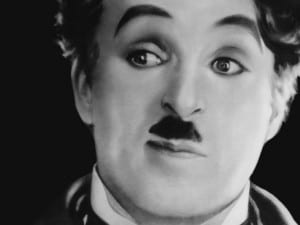I developed previous ideas to create a third 5 minute solo performance. Having already expressed that I should work with my voice and building on the honesty in my monologues which people favoured, I decided to continue recording. I had also been offered the idea of portraying the inner life of a comic, so that of showcasing situations in life which I had been in where I had to laugh to stop myself from crying. I thought others could relate to this, the situations may not be the same but hopefully the emotions would be. I carried out another stream of consciousness exercise , writing for 5 minutes each on reactions to situations in which I want to cry. I then recorded 5 minutes of the free flowing writing, concisely writing down the first thoughts, or words in my mind. I did this until I filled two pages. It was very interesting to see the pattern of words, which words had been repeated and which were enforced. It was also interesting to see the the structure of sentences , the topics I discussed and the connections that could be formed from the language.
I then recorded 5 minutes of the monologue, leaving a 5 second pause on occasions. I continued the same process with the jumbled words . Afterwards , I mixed the words with the sentences so that one monologue was created
These are the monologue, and stream of consciousness scripts –
Stream of ConsciousnessMonologue Scripts
In the performance I played 5 minutes of the two tracks- the 4 monologues were more pronounced than the string of words,further enhanced by adding an echo for authenticity. . Simultaneously, I felt I had to do something live during the performance but didn’t want any words as this would distract from the audio recording. As the recording was based on experiences in which laughter was covered up I thought about silently crying but then thought this wasn’t clear enough to the audience, it may not be construed as laughter. I therefore continuously wrote on post it notes ‘ha ha’, and placed several around the table I was sitting at to represent a smile. I then began placing them over my mouth , indicating that I am stopping laughter escape .
Evaluation for this performance was mixed. One strength was that my voice is very listenable , but the delivery of the piece wasn’t. I had over complicated the piece through the post it notes. A weakness relating to this was that I didn’t explain to the audience to walk around and see the post it notes , as they were hard to see. Furthermore, all people heard were a jumble of words , there was a lack of emotion involved . Krapp’s Last Tape portrays a man listening to a recorded tape about his life, alike to my intended performance rationale .
Here is the online link that gave me that inspiration
I don’t need to do anything, just present the power of my voice. However, I must ensure that this narrative is a detailed account.
Works Cited
Howell, John. Performing Arts Journal , 1979, Vol. 4 Issue 1/2, p152-158
